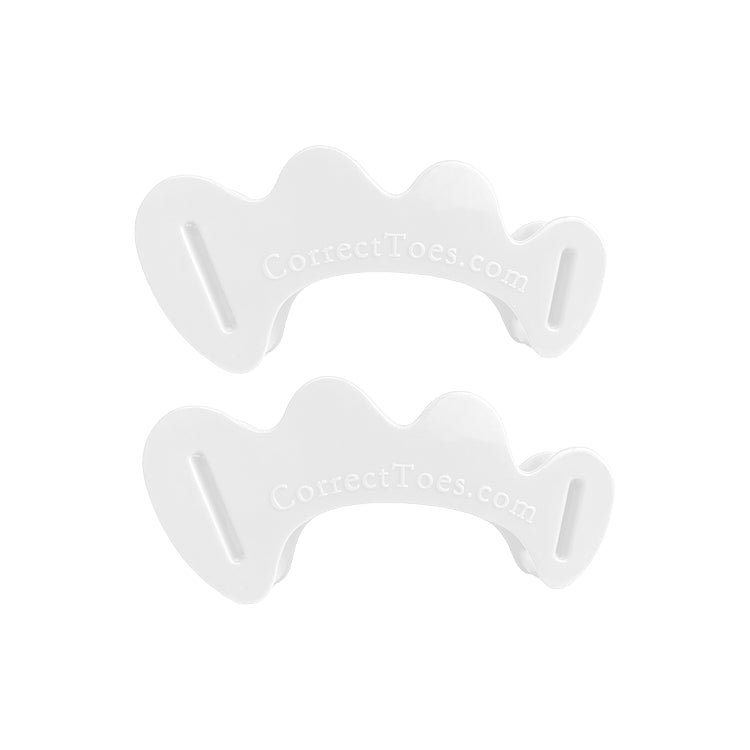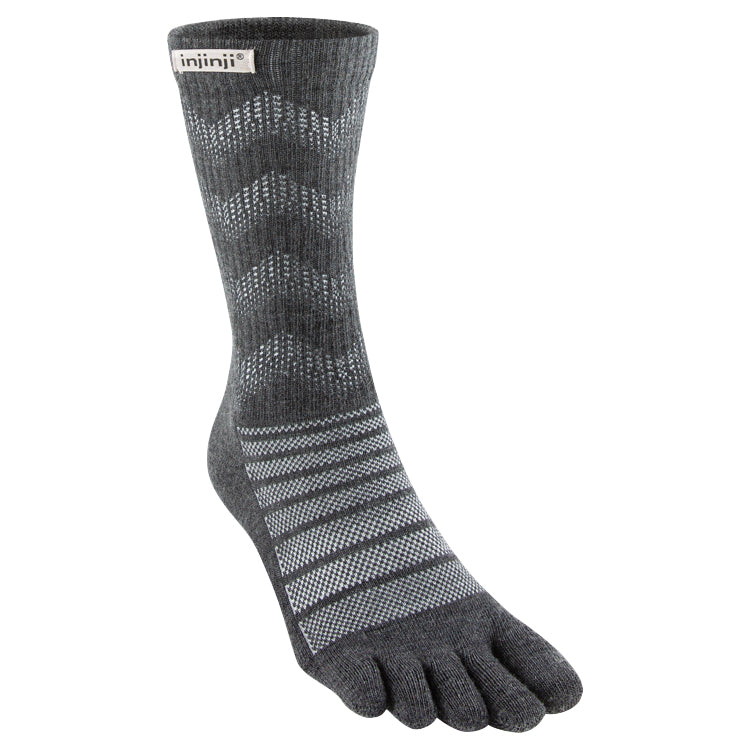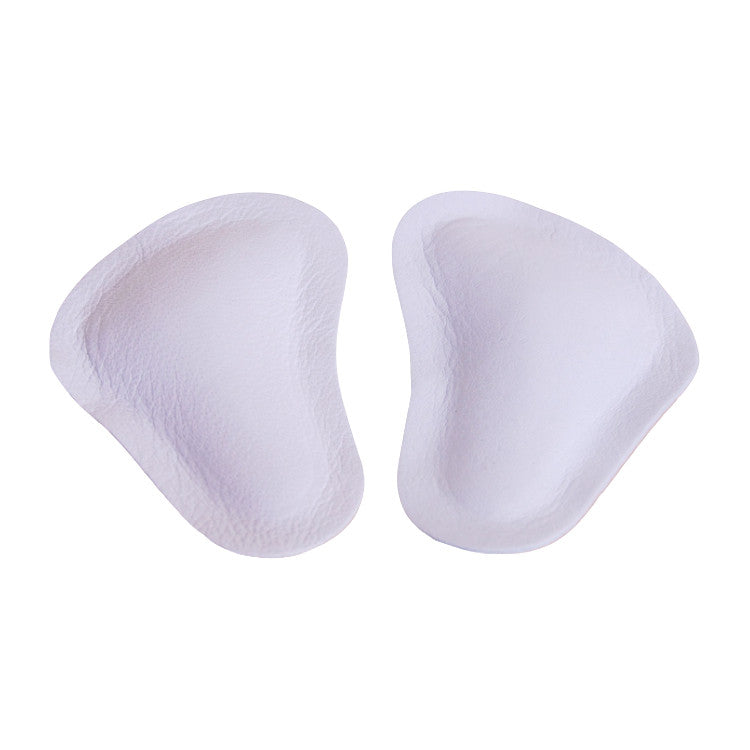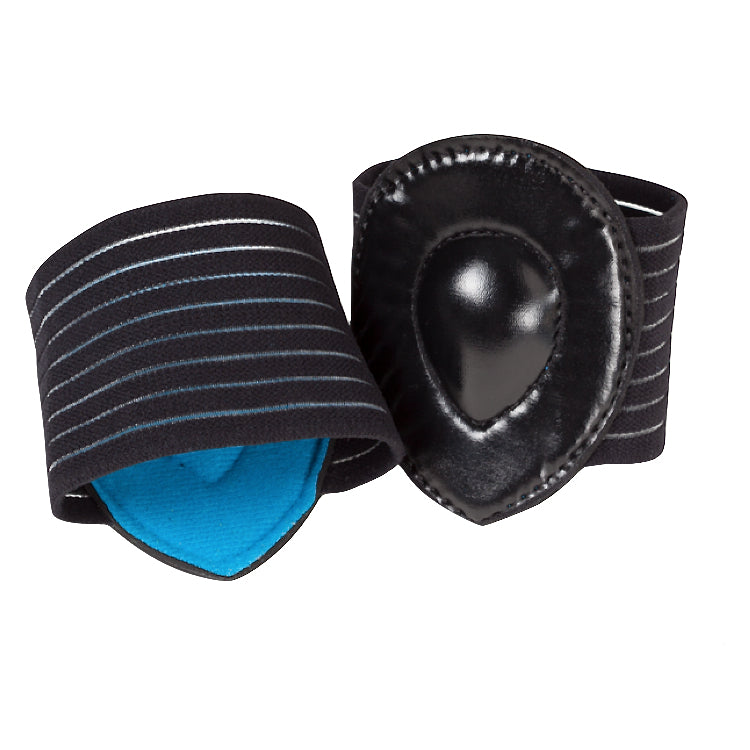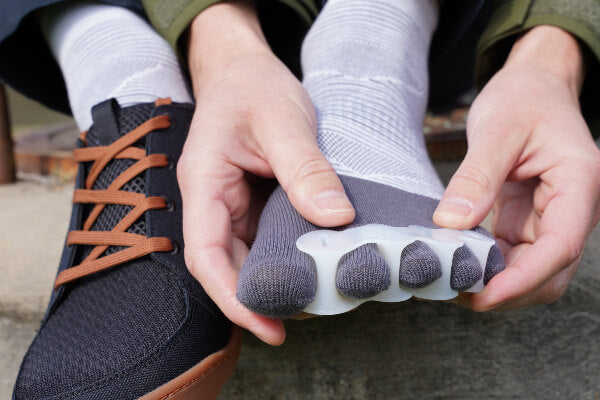
First things first, the term “metatarsalgia” is a general, or umbrella, term for any cause of pain or discomfort in the ball of the foot. Possible causes of metatarsalgia include neuromas, sesamoiditis, capsulitis, gout, and metatarsal fractures, to name a few among many. Determining the precise cause of the ball of foot pain is important in deciding how to address it. Of course, it's always important to get evaluated by a foot care professional who can perform the necessary tests and make recommendations that are perfectly tailored to you and your particular situation.
In a lot of cases, though, restoring the foot's natural alignment and position can be very helpful in reducing the pain and inflammation associated with metatarsalgia and addressing the underlying cause of the problem, which, for most people, is the long-term use of conventional footwear. Footwear that offers slightly more padding beneath the foot can be helpful in the acute phase of recovery, but ultimately, the foot will benefit most from an in-shoe environment that permits it to function naturally. Footwear that is flat, wide, and flexible provides the foot with just such an environment and creates a situation in which the foot's various structures and tissues—including the hugely important forefoot fat pad—can contribute to the process of shock absorption and better distribute body weight throughout the foot, instead of the majority of body weight being routed through the ball of the foot (which is what happens when wearing conventional shoes).
In addition to men's and women's foot-healthy footwear, other natural footgear that has, in our experience, proven helpful for addressing or preventing ball of foot pain includes Correct Toes toe spacers, Injinji toe socks, and Pedag metatarsal pads. These items work in concert to strengthen and balance the foot, and they promote optimal foot function. They help position the toes and other important foot structures in an advantageous alignment, offloading force from the affected area, protecting vulnerable tissues, and improving blood flow to and from the sole of the foot. This, in turn, gives inflamed tissues the chance to heal and the foot an opportunity to grow more robust and resilient. Here are some additional resources from our site that dive deeper into a few of the conditions associated with ball-of-foot pain:
You can also learn more about these (and other common) foot problems by signing up for our free e-courses here. We hope this info helps! If you have any additional questions, please let us know by leaving a comment below or by using our online contact form.

WANT TO IMPROVE YOUR FOOT HEALTH?
Let the team at Natural Footgear help you! Subscribe to our newsletter for the latest offers and helpful info, and sign up for our FREE email courses on various topics and foot health conditions.
Sign Up →
Want to Improve Your Foot Health?
We are here to help you every step of the way. Get our newsletter for the latest offers and helpful info, and sign up for our FREE email courses on various topics and conditions, including bunions, hammertoes, neuromas, plantar fasciosis, shin splints, ingrown toenails, and more.
Sign Up →
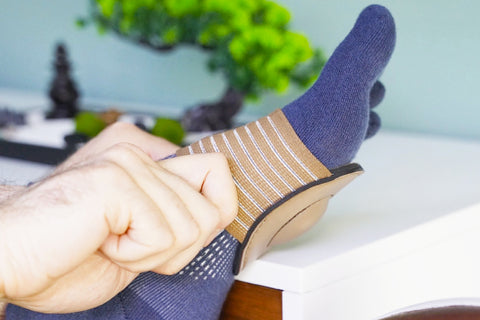 We understand how painful this problem can be and the degree to which it can affect your ability to perform weight-bearing activities. Considering the relatively small size of the sesamoid bones, the discomfort that's sometimes associated with them can have an outsized effect on your well-being and quality of life. Fortunately, we've found that natural treatment approaches can be quite helpful for this problem in many cases. We'll list some...
Read more
We understand how painful this problem can be and the degree to which it can affect your ability to perform weight-bearing activities. Considering the relatively small size of the sesamoid bones, the discomfort that's sometimes associated with them can have an outsized effect on your well-being and quality of life. Fortunately, we've found that natural treatment approaches can be quite helpful for this problem in many cases. We'll list some...
Read more



